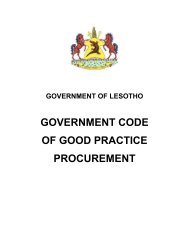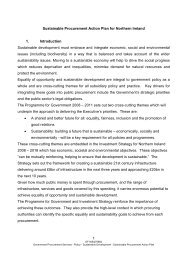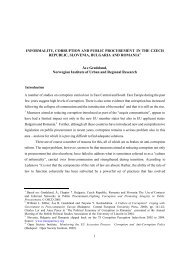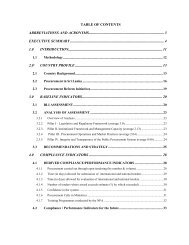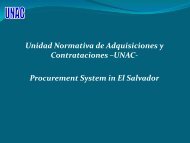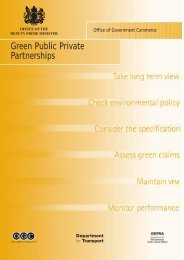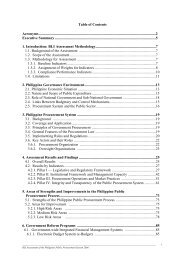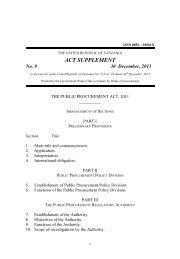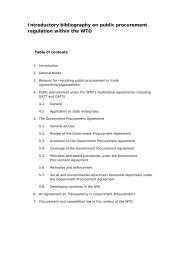Challenges in Public Procurement - unpcdc
Challenges in Public Procurement - unpcdc
Challenges in Public Procurement - unpcdc
You also want an ePaper? Increase the reach of your titles
YUMPU automatically turns print PDFs into web optimized ePapers that Google loves.
CHALLENGES IN PUBLIC PROCUREMENT 7Market conditions have a great <strong>in</strong>fluence on public procurementpractitioners’ effort to maximize competition. Moreover, the marketdeterm<strong>in</strong>es whether or not socio-economic objectives of procurement areaccomplished, whether or not a governmental entity can fulfill its needs;the timel<strong>in</strong>ess of fulfillment; and the quality and costs of purchased goods,services and capital assets. As there are different levels of economicgrowth among countries <strong>in</strong> the world, market conditions are very favorable<strong>in</strong> <strong>in</strong>dustrialized countries, while they may be unfavorable <strong>in</strong> develop<strong>in</strong>gcountries.Even under a perfectly competitive condition like that <strong>in</strong> the UnitedStates, some supplies and services are required only by the government(particularly for weapons systems) and are available <strong>in</strong> the market. This isa captive market, which is limited <strong>in</strong> scope and competition.Also as markets become more and more globalized through regionaland <strong>in</strong>ternational trade agreements and treaties, public procurementpractitioners face a greater challenge. In addition to compliance with theirgovernments’ procurement laws and policies and <strong>in</strong>ternational traderequirements as mentioned above, they face additional challenges <strong>in</strong>clud<strong>in</strong>gcommunication, currency exchange rates and payment, customsregulations, lead-time, transportation, foreign government regulations,trade agreements, and transportation. Thus, “before embark<strong>in</strong>g on aforeign purchas<strong>in</strong>g program, public procurement practitioners mustcarefully assess the total cost implications and compare them to domesticcosts” (National Institute of Governmental Purchas<strong>in</strong>g, Inc., 1999, p. 34).<strong>Public</strong> procurement practitioners are torn between free trade agreementsand their countries' economic development/stabilization policies when theyface a hard choice between select<strong>in</strong>g domestic or foreign firms.Legal EnvironmentApart from public procurement regulations and rules, the legalenvironment refers to a broad legal framework that governs all bus<strong>in</strong>essactivities <strong>in</strong>clud<strong>in</strong>g research and development (regulations deal<strong>in</strong>g withsafety and health of new products), manufactur<strong>in</strong>g (safety and healthregulations at workplace and pollution control), f<strong>in</strong>ance (regulationsdeal<strong>in</strong>g with disclosure of <strong>in</strong>formation), market<strong>in</strong>g (regulations deal<strong>in</strong>gwith deceptive advertis<strong>in</strong>g, disclosure of product characteristics),personnel (regulations deal<strong>in</strong>g with equal opportunity for women andm<strong>in</strong>orities), and contracts. Indeed, most aspects of contracts--public orprivate-- such as contract requirements, disputes, and breach of contract



